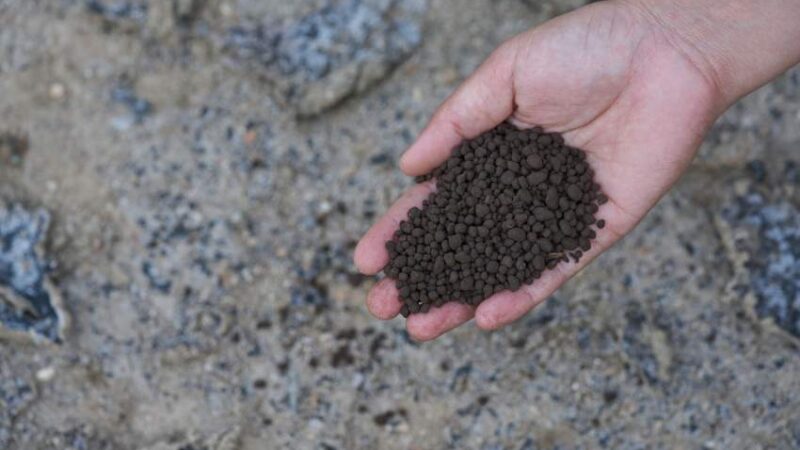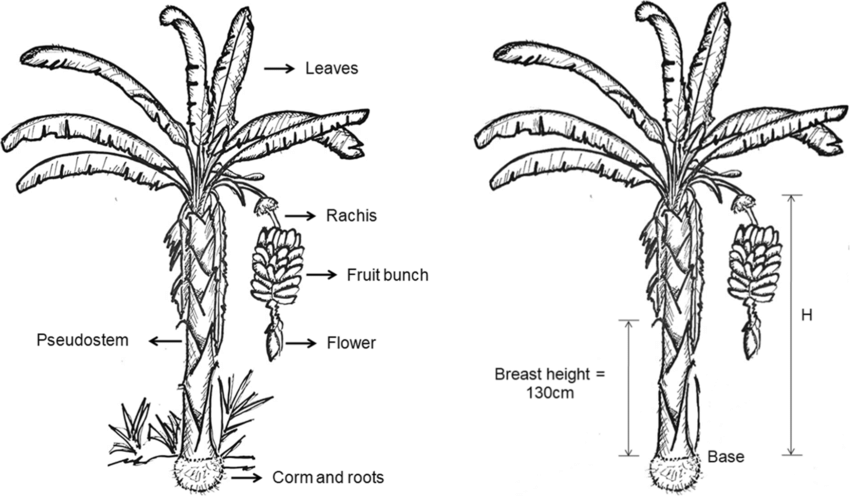Organic Potassium Fertilizer Guide

As sustainable agriculture grows in popularity, many farmers and gardeners seek natural ways to nourish their plants. This organic potassium fertilizer guide will show you how to create effective potassium-rich fertilizers using natural ingredients like coconut husks, banana stems, and more. Using these organic potassium sources not only boosts plant growth but also improves soil health and supports beneficial microbes naturally.
Natural Organic Sources of Phosphate
Several natural materials contain high levels of phosphate, making them excellent ingredients for homemade organic fertilizers. These include:
- Banana stem (bonggol pisang)
- Limestone rock (batuan kapur)
- Guano
- Bone meal
- Goat manure
These sources provide phosphorus in forms that can be broken down and made available to plants through microbial activity or acidic extraction processes.
Asbat (Asam Batu): Organic Mineral Extractor by Presiden Alfianusdoe
Asam Batu, or “Stone Acid,” is a natural extract made from rocks and organic acids. It helps break down minerals locked inside rocks, making nutrients more bioavailable to plants. Here’s how to make it:
Ingredients:
- 10 liters of coconut water
- 3 kg noni fruit (mengkudu)
- 10 limes
- 1 kg starfruit (or other sour fruits, including purslane)
Instructions:
- Blend or mash all ingredients.
- Strain the liquid and store it in a sealed container.
- Let it ferment in a sunny spot—longer fermentation improves quality. This creates a potent natural vinegar.
Use:
This vinegar is used to extract minerals from rocks. Heat rocks until red-hot, then submerge in the vinegar while still hot. Let cool. Repeat this process several times using the same vinegar.
After the rocks become soft:
- Crush or grind them into a fine powder.
- Toast (sangrai) the powder again.
- Submerge it in the vinegar again.
- Allow to settle and ferment until there’s no bubbling.
Final Product:
- Liquid extract: Use as a spray.
- Sediment: Can be mixed into soil.
Application Dosage:
- Spray: 2–5 ml per hand sprayer.
- Soil Drench: 5–10 ml per 15 liters of water (test on a few plants before full application).
Pro Tip:
Mix with unfermented rice water (air leri) or coconut husk ash solution for improved results.
Benefits:
- Supports microbial life and decomposers.
- Serves as a POC and POP enhancer.
- Contains essential macro and micronutrients.
- Helps balance soil pH.
- It can function as a natural herbicide.
Important: As the pH of the Asbat rises, minerals begin to rebind to the stone particles. Separate the extract before this happens.
How to Make POC from Banana Plant Parts (by Eternyty Black)

Banana plants are nutrient powerhouses. Almost every part of the plant can be fermented to make organic compost rich in phosphorus, potassium, iron, and even natural plant hormones.
1. Banana Stem (Bonggol Pisang)
- Chop 3 kg of stems.
- Ferment in a 25-liter container with:
- ¼ kg salt
- 3 pieces of tape, yeast
- 1 glass of sugary water
- 5 tablespoons of sugar
- Optionally, ferment with:
- ¼ kg lime
- 1 glass of tamarind juice
- Let’s sit for 30 days.
2. Banana Sheath (Pelepah)
- Known for antibacterial properties.
- Blend 1 kg, sterilize in rice cooker or boil with aquadest and MSA medium at 121°C for 15 minutes.
- Alternatively, ferment with bread yeast.
3. Banana Leaves
- Blend 3 kg.
- Boil for 15 minutes.
- Strain, pour into jars.
- Add 3 pieces of yeast and 7 tablespoons of sugar.
- Rich in polyphenols and antioxidants.
4. Banana Blossom
- Distill or boil to extract.
- Contains phosphorus, iron, and vitamins A, B, and C.
5. Banana Peel
- Use for a flowering hormone.
- Ferment with yeast and sugar water.
POC Banana Stem (Bonggol Pisang) Fertilizer Recipe
Ingredients:
- Banana stem
- 1 liter of molasses or 1 kg of brown sugar
- Water from 5 coconuts
- Rice water (air leri)
How to Make:
- Chop and mash the banana stem.
- Fill a container to 1/3 with the plant mass.
- Dilute molasses with rice water or coconut water.
- Mix all ingredients and seal tightly.
- Store in a cool, shaded place.
Fermentation:
- After 4 days, check for gas buildup—release it daily.
- Shake the container morning, noon, and night.
- Ferment for 14–21 days.
- Once dormant, strain and store.
TTB (Trabas Tanpa Batas) by Ferdian Setiawan
This mineral-rich mixture boosts phosphorus levels in soil naturally.
Ingredients:
- 2 kg wood ash
- 20 liters of hot water
- 1 kg SP36 fertilizer
Instructions:
- Mix ash with hot water.
- Let it sit for 2 days, then strain the water.
- Mix with SP36.
- Let it sit for another 2 days.
Result:
The reaction creates a clear or slightly yellow mineral solution. Ideal dosage: 0.5–1 liter per tank.
POC from Kipahit Leaves (Tithonia Diversifolia) + Natural Pesticide
Kipahit is rich in nutrients and offers pest-repelling benefits.
Ingredients:
- 1 sack (approx. 2 kg) of chopped kipahit
- 25 liters of coconut water
- 1 kg sugar or brown sugar
- 3 bottles of Yakult (or EM4, MOL as decomposer)
Tools:
- 150-liter drum
- Knife/blender
How to Make:
- Blend kipahit and sugar.
- Mix all ingredients in a drum.
- Fill with clean water to ¼ volume.
- Seal and store in a shaded area.
- Stir and open daily to release gas.
- Ferment for 7–14 days.
Application:
Can be sprayed or used as a soil drench.
Berikut lanjutan lengkap artikel versi bahasa Inggris hingga bagian terakhir, ditulis dengan gaya informatif dan ramah SEO tanpa penomoran:
Potassium from Coconut Husk
Ingredients:
- Coconut husk
- 1 liter of molasses or 1 kg of palm sugar
- Coconut water from 5 coconuts
- Rice rinsing water or rice flour
How to Make:
Chop the coconut husk into small pieces and pound it slightly. Fill one-third of a container or jerrycan with the husk. Dilute molasses with rice rinsing water; if unavailable, use coconut water. Pour the coconut husk, sweetened liquid, rice rinsing water, and coconut water into the container and stir thoroughly. Seal the lid tightly and store it in a shaded area. After four days, check for gas buildup—if the container is swollen, release the gas slightly and reseal. Shake the mixture every morning, noon, and evening, releasing gas daily. Fermentation takes around 14 to 21 days. Once it becomes dormant (usually after 21 days), strain the liquid and store it for use as organic potassium fertilizer.
Organic Potassium from Citric Acid and KOH (by New Bangsa Putra)
A simple reaction between citric acid (like “citrun”) and potassium hydroxide (KOH) produces a potassium-rich organic compound. The ratio is 1:1. First, dilute each component separately. When mixed, they create a liquid potassium fertilizer. To calculate the precise PPM (parts per million) content, refer to a chemical calculator or previously shared nutrient dilution guides. This fertilizer provides fast-acting potassium and is ideal for fruiting crops in critical growth phases.
Liquid Organic Potassium (KCO) from Rice Straw Ash (by Dyahuri Acmad)
Follow these steps:
Burn rice straw until it becomes charcoal. Crush the charcoal and soak 200 grams in 1 liter of clean water for 24 hours. Separate the liquid from the sediment. This liquid, often called “air kie,” can be used as a natural source of potassium. It’s also known as a traditional substitute for potassium carbonate, a common natural noodle hardener. The pH of air usually ranges between 8 to 10. Coconut husk charcoal can also be used in place of rice straw.
Application Dose: 0.5 to 1 liter per 10 liters of water.
KMO (Krokot Memang Oke) by Junaidi Sahid

Krokot (purslane) contains potassium chloride (KCl) and potassium nitrate (KNO₃), making it ideal for use during a plant’s generative phase. KNO₃ balances gibberellic acid (GA3), a growth hormone.
Ingredients:
- 5 kg red purslane with attached soil
- 3 liters of coconut water
- 5–6 liters of rice rinsing water
- ½ kg fermented cassava/tape (or 2 tape balls)
- ½ kg sugar or molasses
- 1 liter of cow/buffalo/goat rumen fluid (if available)
How to Make:
Chop the purslane, including roots and soil. Place all ingredients in a container. Ferment for 20–30 days. After fermentation, strain the liquid.
Application Dose: 200–400 ml per tank of water.
Note: Do not use decomposers like EM4 because Krokot’s beneficial bacteria will dominate and render the decomposer ineffective.
Benefits of KNO₃-based Fertilizer:
- Prevents flower and fruit drop
- Increases drought resistance
- Enhances disease resistance, especially against wilt
- Prevents yellowing and internal browning of chili fruits
- Promotes root development
- Boosts flavor (sweet, sour, spicy)
- Nitrogen (N) supports vegetative growth and tillering in rice
- Increases protein content and grain numbers
Alternative KNO₃ Creation Using Microbes
Microbial Method:
- Mix urea + water + sugar + EM4 or banana pseudostem microbes to create nitrites
- Add nitrobacteria and potassium sources like tomato juice to convert into KNO₃
Chemical Method:
- Mix nitric acid (HNO₃) with KOH
- Use 1 part HNO₃ to 10 parts water
- Dilute ¼ kg of KOH in 1 liter of water
- Add KOH slowly into the HNO₃ solution until the pH is around 7
Note: Nitric acid can be made by combining vinegar with urea, though this is not recommended for beginners due to safety concerns.
Decomposing Liquid Organic Fertilizer from Goat and Cow Manure (by Wahyu Garuda)
This method uses full aerobic decomposition for quicker results without foul odor.
Basic Formula (per 100 liters):
- 25% fresh manure (goat or cow)
- 1% NPK or SP36
- 1 liter aerobic decomposer
- 73% clean water
Method:
Aerate the mixture for 7 days or until the odor disappears. Then store it in a closed container away from contaminants.
Dosage:
- Dilute 1 liter of POC in 10 liters of water
- Apply every 3 to 7 days
Mutiara Bumi Fertilizer by Kang Sani Ramadhan Mediansyah
An organic alternative to chemical-grade “Mutiara” fertilizers, divided into three grades.
Mutiara Bumi Grade A (Vegetative Stage)
Ingredients:
- 3–5 kg golden apple snails
- 100 grams of shrimp paste
- 3 liters of coconut water
- 2–3 banana corms
- 1 liter of rabbit urine
- 2 kg wet sheep manure
- Leftover rice water or fish pond water
Mutiara Bumi Grade C (Generative Stage)
Ingredients:
- 3–5 kg of rotten fruit
- 100 grams of carbide residue
- 3 liters of coconut water
- 2–3 kg banana corms
- 1 liter fermented rice/tape
- 2 kg of duck manure
- Leftover rice water or fish pond water
Mutiara Bumi Grade S (Superior Formula)
Ingredients:
- 3 liters of coconut vinegar
- 3 liters of banana core vinegar
- Water hyacinth compost (rich in humic acid)
- Bat guano
How to Make:
Chop the snails and banana corms finely. Mix with shrimp paste, coconut water, rabbit urine, sheep manure, and rice water. Stir thoroughly with hope and positive intention. Ferment the mixture for 3–7 days.
Application Dosage:
- 250 cc per tank for rice, legumes, and leafy vegetables
- 500 cc for chili, eggplant, and fruit-bearing plants
- Can be combined with chemical foliar fertilizers for optimal results
By using organic potassium fertilizers made from natural materials, you can improve your crop yields while supporting a healthier, more sustainable farming system. These easy-to-make fertilizers not only enrich your soil but also reduce dependency on chemical inputs. For more detailed guidance on creating various organic fertilizers, visit our comprehensive guide on how to make organic fertilizers. Start your journey toward greener farming today with these natural solutions!

Comments are closed.